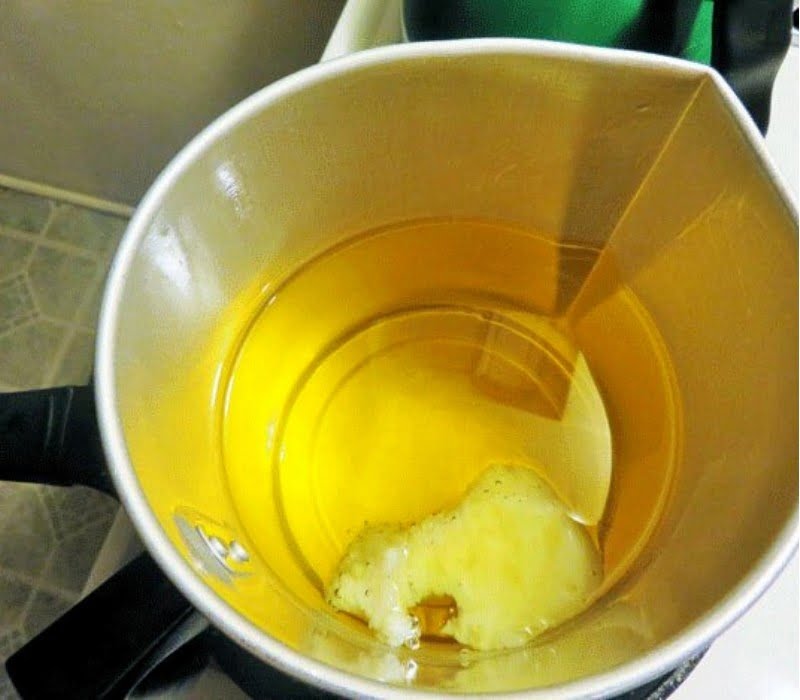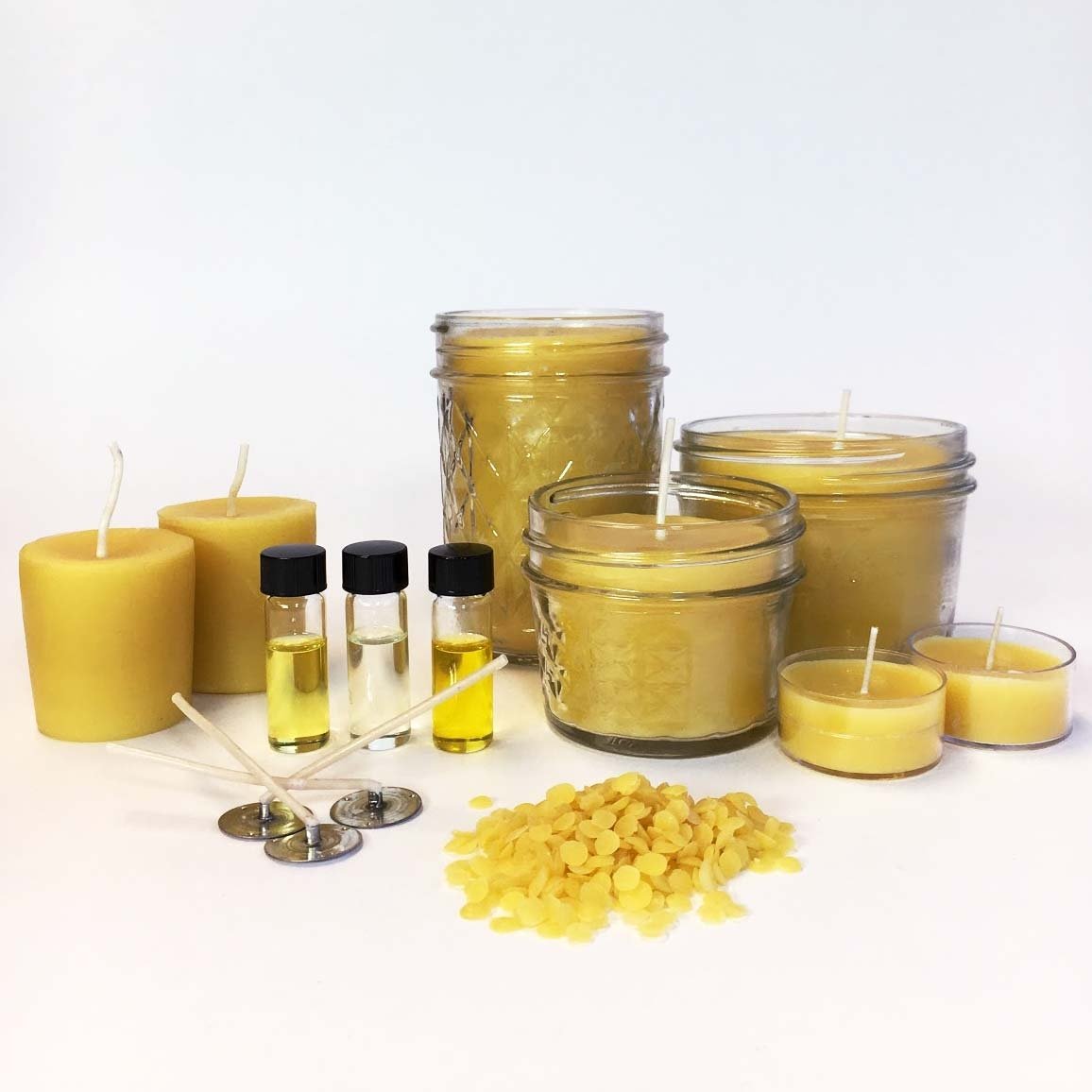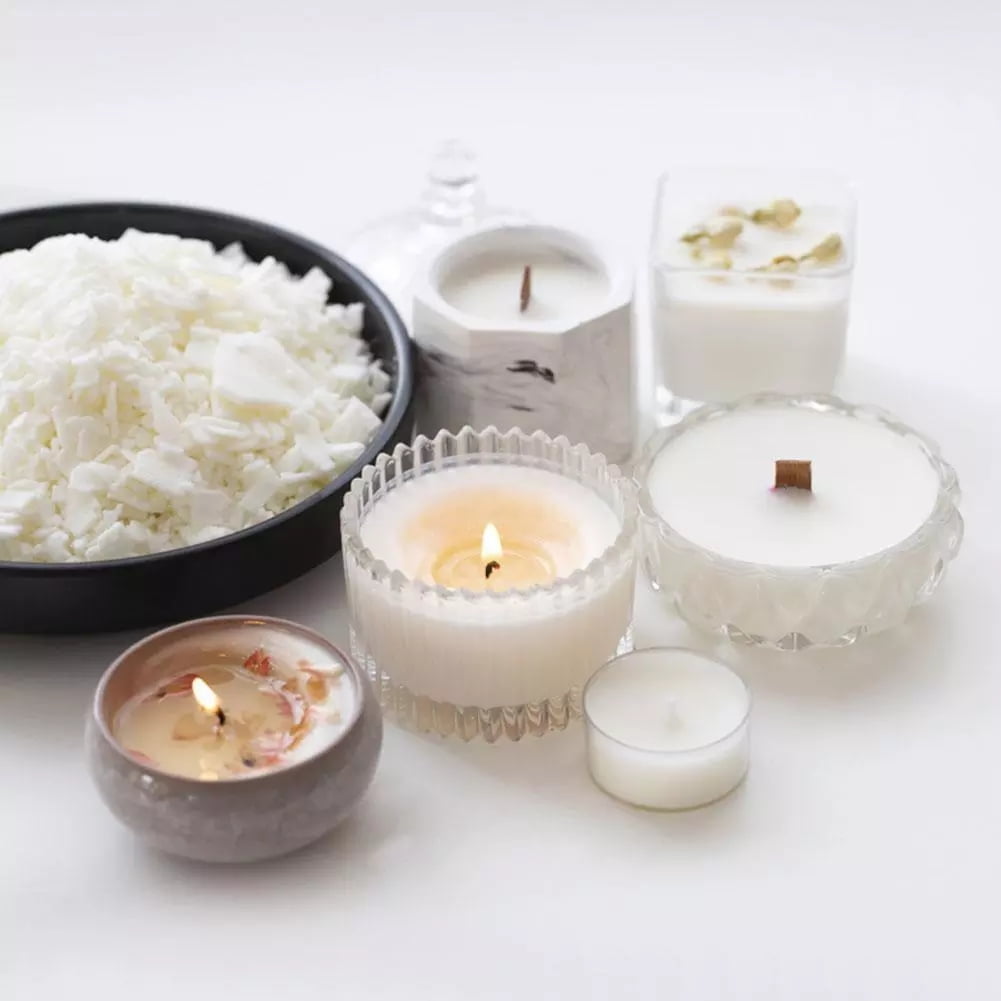Candle making has evolved into more than just a hobby; it has become an art form that allows individuals to express their creativity and create a soothing ambiance in their living spaces. In recent years, there has been a rising trend in using essential oils to enhance the benefits of candles. From aromatherapy to relaxation, essential oils add an extra dimension to candle making that can elevate the overall experience.
In this blog post, we will delve into the world of essential oils and explore how they can transform your candle making journey. We will discuss the different types of essential oils commonly used in candle making, their characteristics, and safety guidelines for handling these potent ingredients. Our goal is to provide you with all the necessary information and guidance so that you can successfully incorporate essential oils into your candle creations.
Understanding how much essential oil to add is crucial in achieving the perfect balance of scent without overpowering the natural essence of the wax. We will explore various factors that influence the amount of essential oil needed, such as candle size, desired scent strength, and type of wax. Additionally, we will share tips on accurate measurement techniques and explain why experimenting and testing are vital steps in creating consistent results.
As you embark on this aromatic journey of essential oil-infused candles, remember that mastery lies in finding the right balance between fragrance and craftsmanship. Let us guide you through this enchanting process as you learn the secrets behind creating captivating scents that will transform any space into a tranquil haven.
Stay tuned for our upcoming sections where we dive deeper into understanding essential oils, dosage recommendations, scent strength preferences, techniques for incorporation, testing processes, troubleshooting tips, and more. Get ready to unveil your inner artisan and uncover endless possibilities with essential oil-infused candles.
Understanding Essential Oils
Types of Essential Oils
When it comes to candle making, there is a wide variety of essential oils to choose from. Each essential oil has its own unique characteristics and scent profile, allowing for endless possibilities in creating customized candles. Some commonly used essential oils in candle making include lavender, eucalyptus, lemon, rosemary, and peppermint.
Lavender offers a calming and soothing aroma, perfect for promoting relaxation and restful sleep. On the other hand, eucalyptus provides a refreshing and invigorating scent that can help clear the mind and promote focus.
Characteristics and Safety Guidelines
When using essential oils in candle making, it’s important to consider their characteristics and safety guidelines. Essential oils are highly concentrated plant extracts that should be handled with care. Prior to use, it is recommended to conduct thorough research on each specific essential oil to ensure safe handling practices. It’s also crucial to note any potential sensitivities or allergies associated with certain essential oils.
Additionally, some essential oils have specific safety guidelines due to their potency or potential adverse effects on certain individuals. For example, citrus-based essential oils such as lemon or orange are known to be phototoxic, meaning they can cause skin sensitivity when exposed to sunlight. Therefore, it’s important not only to understand the scent profile of each essential oil but also its potential safety considerations.
It is advisable for candle makers to wear gloves when handling undiluted essential oils and avoid direct contact with the skin or eyes. Proper ventilation while working with essential oils is also essential to avoid inhaling large amounts of concentrated fragrance molecules.
Tips for Safe Usage
To ensure safe usage of essential oils in candle making:
- Always follow recommended industry guidelines regarding the maximum usage rate for each type of oil.
- Conduct a patch test before using new or unfamiliar essential oils to check for any adverse reactions.
- Use a reliable source for purchasing high-quality essential oils that are safe for candle making.
- Keep essential oils out of reach of children and pets and store them in a cool, dark place away from direct sunlight or heat sources.
- If you have specific health concerns or allergies, consult with a healthcare professional before using essential oils.
By understanding the different types of essential oils available, their characteristics, and following appropriate safety guidelines, candle makers can confidently incorporate essential oils into their creations, enhancing both the aroma and therapeutic benefits of their candles.
Factors to Consider When Deciding How Much Essential Oil to Add
When it comes to adding essential oils to candle making, there are several factors that need to be considered in order to determine the appropriate amount. These factors include the size of the candle, desired scent strength, and type of wax being used. By taking these factors into account, you can ensure that your candles have a balanced and pleasant aroma.
Firstly, the size of the candle plays a significant role in determining how much essential oil should be added. Smaller candles such as tea lights and votives may require a smaller amount of essential oil compared to larger container candles. This is because the surface area of the candle affects the scent throw and absorption of the essential oil. It is recommended to experiment with different amounts for each candle size to achieve the desired scent strength.
In addition to candle size, desired scent strength is another important factor to consider when deciding how much essential oil to add. Some individuals may prefer a lighter scent, while others may prefer a stronger aroma. It is important to take this preference into account and adjust the amount accordingly. By testing different ratios and dilution levels, you can find the perfect balance that suits your personal preference.
Lastly, the type of wax being used can also influence how much essential oil should be added. Different types of wax have varying absorption rates and melting points, which can affect how strong or subtle the scent will be when the candle is lit. Be sure to do some research on the specific characteristics of your chosen wax and adjust your essential oil dosage accordingly.
To accurately measure essential oils for consistent results, it is recommended to use a scale or dropper for precise measurements. This ensures that each batch of candles has a consistent scent profile. By taking into consideration these factors – candle size, desired scent strength, and type of wax – you can confidently decide how much essential oil to add in order to create beautifully scented candles that bring relaxation and aromatherapy benefits into any space.
Recommended Essential Oil Dosage for Different Candle Sizes
Understanding the Impact of Candle Size on Scent Strength
When adding essential oils to candles, it is important to consider the size of the candle in order to achieve the desired scent strength. The surface area of the candle plays a significant role in how much fragrance it can absorb and ultimately emit. Smaller candles, such as tea lights or votives, have less surface area compared to larger container candles. As a result, they will require less essential oil for a similar scent throw.
Recommended Dosage for Different Candle Sizes
To help you determine the appropriate amount of essential oil to add to your candles, here are some general guidelines based on candle size:
- Tea Lights: For standard-sized tea lights (approximately 1.5 inches in diameter), a recommended dosage is around 0.5-1 ounce of essential oil per pound of wax. However, since tea lights are smaller and have less surface area, you may need to experiment with smaller amounts initially and adjust as necessary.
- Votives: When making votive candles (typically 2 inches in diameter), a suggested dosage would be approximately 1-1.5 ounces of essential oil per pound of wax. Again, start with a smaller amount and increase if needed.
- Container Candles: In the case of container candles, the recommended dosage ranges from about 1-2 ounces of essential oil per pound of wax. This higher amount is due to their larger size and increased potential for fragrance absorption.
It is important to note that these recommendations are general guidelines and can vary depending on personal preference and the specific type and brand of essential oil being used.
Balancing Scent Strength and Wax Quality
While it may be tempting to add more essential oil than recommended in order to enhance the fragrance strength, it is crucial to find a balance between scent intensity and overall quality. Overloading a candle with too much essential oil can lead to issues such as poor burn quality, excessive sooting, or even a decrease in scent throw.
Different types of wax have varying absorption capacities, so it is important to consider the type of wax being used when determining the amount of essential oil. For example, soy wax generally requires less essential oil compared to paraffin wax due to its higher fragrance load capacity.
To find the perfect balance of scent strength and wax quality, it is recommended to experiment and conduct fragrance tests with different amounts of essential oil. This will allow you to determine the ideal dosage for your specific candle making process and desired results.
Scent Strength
When it comes to adding essential oils to candle making, understanding dilution ratios is crucial in achieving the desired scent strength. Dilution ratios refer to the amount of essential oil needed relative to the total weight of wax used in the candle. This section will explain the concept of dilution ratios and their significance in creating different scent strengths in candles.
Different individuals may have varying preferences when it comes to scent strength in their candles. Some may prefer a light, subtle scent, while others may prefer a stronger, more prominent aroma. Dilution ratios allow candle makers to adjust the amount of essential oil used based on these preferences.
To achieve a lighter scent, a lower dilution ratio is recommended. For example, a dilution ratio of 5% means that 5 grams of essential oil should be added per every 100 grams of wax used. On the other hand, for those seeking a stronger scent, higher dilution ratios can be used. For instance, a dilution ratio of 10% would mean adding 10 grams of essential oil per every 100 grams of wax.
It’s important to note that different candle sizes and types may require different dilution ratios. Smaller candles like tea lights or votives typically require higher fragrance loadings compared to larger container candles or pillar candles due to their smaller surface area. Experimentation and testing are key in determining the ideal dilution ratio for each specific candle size and desired intensity.
| Candle Size | Dilution Ratio | Measurement Example |
|---|---|---|
| Tea Lights | 8% | 8 grams per 100 grams of wax |
| Votives | 7% | 7 grams per 100 grams of wax |
| Container Candles | 5% | 5 grams per 100 grams of wax |
Remember, these dilution ratios serve as a starting point. It’s important to experiment and test different amounts to find the perfect balance of essential oil for your specific preferences and candle type. Always keep track of your measurements and adjust accordingly until you achieve the desired scent strength in your candles.
Techniques for Incorporating Essential Oils into Candle Making
When it comes to incorporating essential oils into candle making, there are various techniques you can use to achieve the desired scent and quality. Each technique has its pros and cons, so it’s important to understand them before deciding which one suits your needs best. Here are some popular techniques:
- Adding directly to the wax: This technique involves adding essential oils directly to the melted wax during the candle making process. It is a straightforward method that allows for maximum control over the scent strength. However, it is essential to consider the flashpoint of the oil and ensure it can withstand the heat of the melting wax without losing its fragrance or properties.
- Using fragrance oils: Fragrance oils are synthetic scents designed specifically for candle making. They often mimic the aroma of essential oils but may not have the same therapeutic benefits. The advantage of using fragrance oils is their wide variety of scents and their compatibility with different waxes. However, if you prefer a more natural approach or wish to enjoy aromatherapy benefits, using essential oils might be a better option.
- Blending with other carrier oils: Another technique is blending your chosen essential oil with carrier oils, such as coconut oil or soybean oil, before adding them to your candles. This method helps distribute the scent more evenly throughout the wax and can enhance scent throw. Additionally, carrier oils provide additional nourishing properties and promote a longer burn time for your candle.
It’s important to note that regardless of which technique you choose, always follow safety guidelines when handling essential oils. Avoid direct contact with skin or eyes, and ensure proper ventilation in your workspace.
Experimenting with different techniques will allow you to discover what works best for you and create unique combinations of scents for your candle making projects. Remember, the quality and intensity of your essential oil-infused candles will largely depend on the technique you choose, so don’t be afraid to get creative and try new methods. Happy candle making.
Testing and Adjusting
When it comes to creating the perfect balance of essential oil in candle making, testing and adjusting are crucial steps. Each candle maker has their own preferences when it comes to scent throw and intensity, which is why it’s important to find the right amount of essential oil that suits your desired outcome. In this section, we will explore the process of testing and adjusting the amount of essential oil to achieve the perfect balance.
To begin, it’s recommended to start with a smaller amount of essential oil and gradually increase it until you reach your desired scent strength. This allows for careful evaluation and adjustment along the way. Keep in mind that different factors can influence the amount of essential oil needed, such as candle size, type of wax used, and personal preference for scent intensity.
One technique for testing and adjusting is known as “the sniff test.” Simply light your candle and allow it to burn for a short period of time before extinguishing the flame. Take a moment to sniff the air around the candle and evaluate how strong or subtle the scent is.
If it’s too weak, you can increase the amount of essential oil by adding a few more drops into your next batch. Conversely, if it’s too overpowering or overwhelming, reduce the amount of essential oil in your next batch.
Another method for testing and adjusting is called “the dry-burn test.” This involves allowing your candle to burn completely without any added fragrance. By doing so, you can assess the natural scent throw of your chosen wax without interference from other fragrances. This can serve as a baseline reference point as you experiment with different amounts of essential oil.
Remember that finding the perfect balance may require several rounds of testing and adjusting. It’s important to be patient and document your results each time you make changes. By keeping track of your adjustments, you’ll have a clearer understanding of what works best for your specific candles.
| Testing Method | Description |
|---|---|
| The Sniff Test | Light the candle and evaluate the scent throw by sniffing the air around it. |
| The Dry-Burn Test | Allow the candle to burn without added fragrance to assess its natural scent throw. |
Additional Tips and Considerations for Successful Essential Oil Infused Candles
In addition to understanding the recommended dosage and dilution ratios for essential oil-infused candles, there are several other tips and considerations that can help ensure a successful outcome. These tips will help enhance the longevity and scent throw of your candles, as well as optimize the overall quality of your creations.
Firstly, it is important to store and care for your essential oils properly. Essential oils are delicate substances that can be affected by factors such as light, heat, and oxygen exposure. To protect their potency, it is recommended to store them in dark glass bottles away from direct sunlight or heat sources.
Additionally, be mindful of their shelf life as essential oils can lose their potency over time. It is generally suggested to use essential oils within 1-2 years of purchase to ensure optimal fragrance performance in your candle making.
Furthermore, you may want to consider using high-quality essential oils from reputable sources. The quality of the essential oil can greatly impact the final scent and performance of your candle. Look for essential oils that are pure, unadulterated, and sourced from reputable suppliers who prioritize sustainability and ethical practices. Quality assurance can play a significant role in achieving consistent results in your candle making endeavors.
Lastly, when incorporating essential oils into your candles, consider blending them with other complementary scents or fragrance oils. This can add complexity and depth to the aroma profile of your candles. Experiment with different combinations to create unique scent combinations that appeal to your personal preferences or target market.
Overall, mastering the art of essential oil-infused candle making requires attention to detail, experimentation, and ongoing learning. By following these additional tips and considerations alongside the recommended dosages provided earlier in this blog post, you will be able to create beautifully scented candles that promote relaxation, provide aromatherapy benefits, or simply add a delightful ambiance to any space.
Keep exploring different techniques, testing various amounts, and refining your craft to uncover your perfect balance of essential oils for candle making success.
Conclusion
In conclusion, incorporating essential oils into candle making has become an increasingly popular trend due to the numerous benefits they offer, such as aromatherapy and relaxation. Throughout this blog post, we have explored the types of essential oils commonly used in candle making, discussed safety guidelines and precautions, and delved into factors to consider when deciding how much essential oil to add.
We have also provided recommended dosage for different candle sizes, explained the concept of dilution ratios for achieving desired scent strength, and highlighted techniques for incorporating essential oils into candles.
To master the art of essential oil-infused candle making, it is crucial to strike the perfect balance between the natural wax scent and the added fragrance. Experimentation and testing play a vital role in achieving this balance. By carefully measuring essential oils and conducting fragrance tests, you can determine the optimal amount needed for desired scent throw without overwhelming or fading over time.
As you continue on your candle making journey, I encourage you to explore different combinations of essential oils and develop your own unique scents. Remember to store your essential oils properly, adhering to recommended shelf life guidelines. High-quality essential oils are key to creating long-lasting candles with exceptional scent throw.
I invite you to share your experiences and favorite essential oil blends for candle making in the comments section below. By engaging with one another, we can expand our knowledge and further enhance our ability to create beautiful candles infused with delightful scents. Happy experimenting.
Frequently Asked Questions
How much essential oil do I add when making candles?
The amount of essential oil to add when making candles can vary depending on personal preference and the strength of fragrance desired. Generally, a common rule of thumb is to add about 1 ounce (30 ml) of essential oil for every pound (454 grams) of wax used.
However, it’s important to note that certain essential oils are more potent than others, so the actual amount may need to be adjusted accordingly. Additionally, it’s recommended to refer to the specific guidelines provided by the candle-making supplies or fragrance manufacturer for optimal results.
What is the ratio of essential oils to soy candles?
The ratio of essential oils to soy candles is typically around 6-10% fragrance load, based on the weight of the wax used. For example, if you have 1 pound (454 grams) of soy wax, you would add around 0.96-1.6 ounces (28-47 ml) of essential oil to achieve a proper scent throw in your candles.
It’s crucial to measure both the wax and essential oil accurately and adjust the ratio as needed based on the potency of the chosen essential oil or fragrance.
Can you put too much essential oil in a candle?
Yes, it is possible to put too much essential oil in a candle. While adding more essential oil may seem like it will result in a stronger scent throw, exceeding certain limits can lead to issues like poor burning performance and even safety hazards.
Overloading a candle with excessive amounts of essential oil can cause problems such as excessive smoking while burning, reduced burn time, uneven melting, and potentially dangerous situations like flaring or sparking flames due to high levels of volatile compounds evaporating from the candle’s surface area during burning. It’s important to follow recommended guidelines and not exceed safe usage rates for essential oils when making candles for best results and safety precautions.

Welcome to my candle making blog! In this blog, I will be sharing my tips and tricks for making candles. I will also be sharing some of my favorite recipes.





